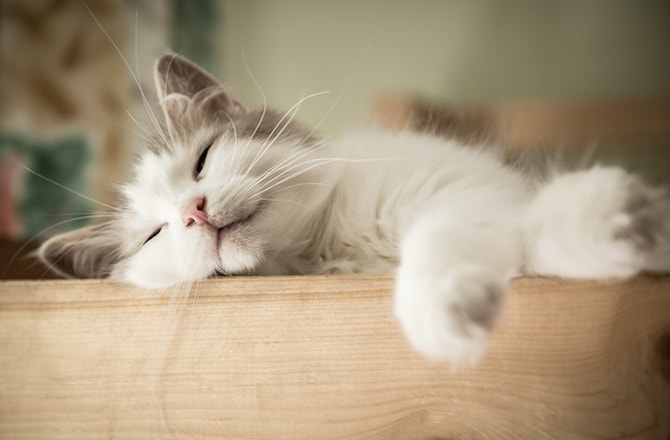Sometimes referred to as the Domestic Shorthair, the American Shorthair was the cat breed found on the Mayflower catching mice! Affectionate and endearing, it quickly became one of the earliest cat breeds kept in the home.
American Shorthair Physical Characteristics
The American Shorthair has a robust athletic build. Its face is wide and its eyes are large and round. The ears of an American Shorthair, meanwhile, are widely spaced on the head with rounded tips.
Color(s)
Although most commonly associated with the classic tabby pattern in red, brown, silver or orange, the American Shorthair is seen in a variety of colors and patterns.
Coat
Short and dense.
American Shorthair Personality and Temperament
Activity Level
Moderate to High
Positives
Social and affectionate, the American Shorthair is an easy going addition to almost any household. It is even known to be friendly toward dogs.
Special Requirements
The American Shorthair requires grooming once or twice a week in order to remove loose fur from the undercoat. The good news is these cats love the attention.
American Shorthair Health
The following conditions are commonly seen in American Shorthairs, obesity.
American Shorthair History and Background
The history of the American Shorthair goes back well over 300 years, beginning with its journey across the Atlantic Ocean from Britain to its subsequent arrival in what would become the United States of America. The American Shorthair is a true-blooded, sure-footed cat, and has earned a reputation for being a hard worker.
The Shorthair’s roots began in England. As a common house cat in Britain, the Shorthair was well regarded for its work skills, specifically for residential rodent control. For this reason, the Shorthair was commonly brought along on trips to sea. And so it was, that from 1621 to 1639, as dissidents prepared for their treacherous journey from Britain, they included their loyal feline companions, both to keep their food storage safe from rodents, and to eliminate the disease-carrying rats.
It is important to remember that by the 1620s, the people of Europe – including Britain – had become accustomed to frequent outbreaks of the Black Plague. When the first Mayflower crossed over to the new world in 1621, it had only been 18 years since the pandemic had killed 18,000 of London’s residents.
In the early decades of the Plague, cats were frequently blamed for the spread of the disease, and were destroyed in the process. Without cats, the rat population exploded and led to the Plague’s increased transmission. But by the 1600s, humans had made the appropriate connection between the Plague and the rodents, a possible carrier of the disease. The British Shorthair regained its well-regarded position, and remains today a common fixture of the British home.
Their descendants–what were to become the American Shorthairs–evolved to adapt to the conditions of the new world, maintaining their status as dependable and efficient farm workers.
A number of factors have shaped the American Shorthair’s form and personality, the most important being environmental elements and outcrossings, both naturally and through human design. Environmental adaptability was essential for survival, and nature selected those that could survive harsh winters and blistering summers, work long hours on the farm without getting ruffled, and settle down peacefully at the end of the day as a member of the home. The Shorthair matured and improved to be the strong, robust, easy-going cats we find today.
In 1906, the Cat Fanciers Association (CFA) included the American Shorthair in its first registry, among five other cats. Breeders take pains to maintain the distinction between their carefully bred American Shorthairs and the average street cat, since the outward physical similarities suggested a relation.
In 1965, the American Shorthair received its highest accolade when one of its members, a silver coated male tabby named Shawnee Trademark, was declared Best Cat of the Year (COTY) by the CFA. Since then, two other American Shorthairs have been awarded a COTY: Hedgewood’s Greatest American Hero (Mr. H. to his friends) in 1984, and Sol-Mer Sharif in 1996.
The American Shorthair has come a long way, from its humble beginnings to the upper echelon of cat societies. All well deserved for this endearing and loyal cat.
By: Chewy Editorial
Share:










